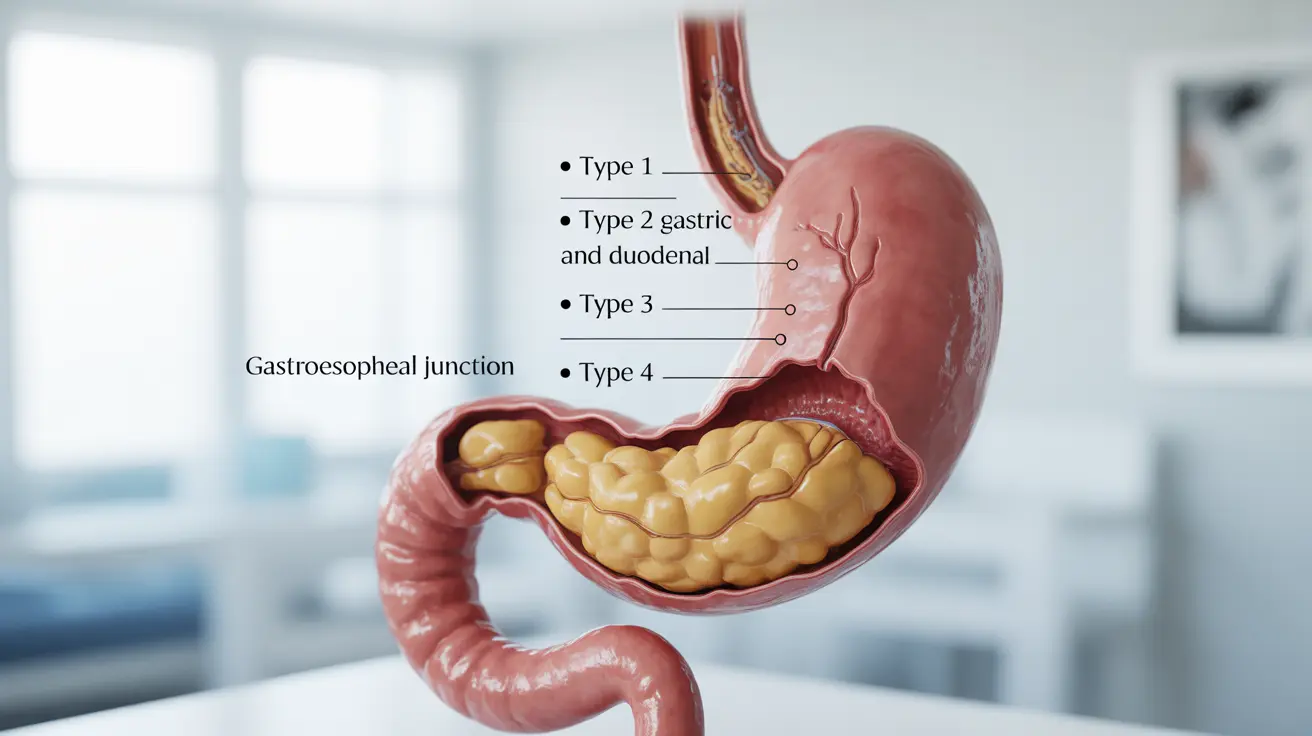Gastric ulcers are painful sores that develop in the stomach lining, causing significant discomfort and potential complications if left untreated. Understanding the different types of gastric ulcers and their characteristics is crucial for proper diagnosis and treatment. This comprehensive guide explores the various forms of gastric ulcers, their symptoms, and available treatment options.
Types of Gastric Ulcers and Their Location
Gastric ulcers can develop in different areas of the stomach, each with distinct characteristics and potential complications:
Type 1: Gastric Body Ulcers
These ulcers form in the main body of the stomach, typically along the lesser curvature. They're often associated with increased acid production and are the most common type of gastric ulcer.
Type 2: Gastric and Duodenal Ulcers
This type involves the presence of both stomach and duodenal ulcers simultaneously, indicating a more complex condition that may require specialized treatment approaches.
Type 3: Prepyloric Ulcers
Located near the pylorus (the junction between the stomach and small intestine), these ulcers can affect normal stomach emptying and require careful management.
Type 4: Proximal Gastroesophageal Ulcers
These ulcers develop near the gastroesophageal junction and may be associated with acid reflux conditions.
Common Symptoms Across Ulcer Types
While symptoms can vary depending on the ulcer's location, common indicators include:
- Burning stomach pain
- Feeling of fullness or bloating
- Intolerance to fatty foods
- Nausea or vomiting
- Loss of appetite
- Unexplained weight loss
Diagnostic Approaches and Testing
Healthcare providers use various methods to diagnose gastric ulcers accurately:
- Upper endoscopy
- H. pylori testing
- Blood tests
- Imaging studies
- Biopsy (when necessary)
Risk Factors and Causes
Several factors can contribute to the development of gastric ulcers:
- H. pylori bacterial infection
- Regular use of NSAIDs
- Excessive alcohol consumption
- Smoking
- Chronic stress
- Family history
- Advanced age
Treatment Strategies
Treatment approaches vary based on the ulcer type and underlying cause:
Medication-Based Treatments
- Proton pump inhibitors (PPIs)
- H2 blockers
- Antibiotics (for H. pylori infection)
- Protective medications
Lifestyle Modifications
- Dietary changes
- Stress management
- Smoking cessation
- Alcohol reduction
Frequently Asked Questions
What are the different types of gastric ulcers and where do they form in the stomach? Gastric ulcers primarily occur in four locations: the gastric body (Type 1), combined gastric and duodenal areas (Type 2), prepyloric region (Type 3), and near the gastroesophageal junction (Type 4).
What symptoms are common for each type of gastric ulcer and how do they differ? While all types share common symptoms like burning pain and discomfort, their location can affect specific symptoms. For example, prepyloric ulcers may cause more issues with stomach emptying, while proximal ulcers might be associated with reflux symptoms.
How are gastric ulcers diagnosed and what tests are used to identify the ulcer type and cause? Diagnosis typically involves upper endoscopy, H. pylori testing, and sometimes imaging studies. Endoscopy allows direct visualization of the ulcer location and type, while additional tests help determine the underlying cause.
What causes gastric ulcers and which factors increase the risk of developing them? The main causes include H. pylori infection and NSAID use. Risk factors include smoking, alcohol consumption, stress, and family history. Different ulcer types may have varying risk factors and causes.
What are the treatment options for gastric ulcers and how do they vary depending on the ulcer type? Treatment options include medications like PPIs and H2 blockers, antibiotics for H. pylori infection, and lifestyle modifications. The specific treatment plan depends on the ulcer type, location, and underlying cause.




